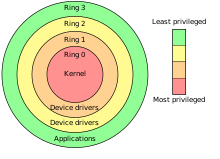
Back Intel Management Engine Czech 인텔 관리 엔진 Korean Intel Management Engine Russian Intel Management Engine Turkish Intel Management Engine Ukrainian 英特尔管理引擎 Chinese

The Intel Management Engine (ME), also known as the Intel Manageability Engine,[1][2] is an autonomous subsystem that has been incorporated in virtually all of Intel's processor chipsets since 2008.[1][3][4] It is located in the Platform Controller Hub of modern Intel motherboards.
The Intel Management Engine always runs as long as the motherboard is receiving power, even when the computer is turned off. This issue can be mitigated with the deployment of a hardware device which is able to disconnect all connections to mains power as well as all internal forms of energy storage. The Electronic Frontier Foundation and some security researchers have voiced concern that the Management Engine is a backdoor.
Intel's main competitor, AMD, has incorporated the equivalent AMD Secure Technology (formally called Platform Security Processor) in virtually all of its post-2013 CPUs.
- ^ a b Oster, Joseph E. (September 3, 2019). "Getting Started with Intel Active Management Technology (Intel AMT)". Intel. Retrieved September 22, 2020.
- ^ "Intel AMT and the Intel ME". Intel. Archived from the original on February 21, 2019.
{{cite web}}: CS1 maint: unfit URL (link) - ^ "Frequently Asked Questions for the Intel Management Engine Verification Utility".
Built into many Intel Chipset–based platforms is a small, low-power computer subsystem called the Intel Management Engine (Intel ME).
- ^ Portnoy, Erica; Eckersley, Peter (May 8, 2017). "Intel's Management Engine is a security hazard, and users need a way to disable it". Electronic Frontier Foundation. Retrieved February 21, 2020.